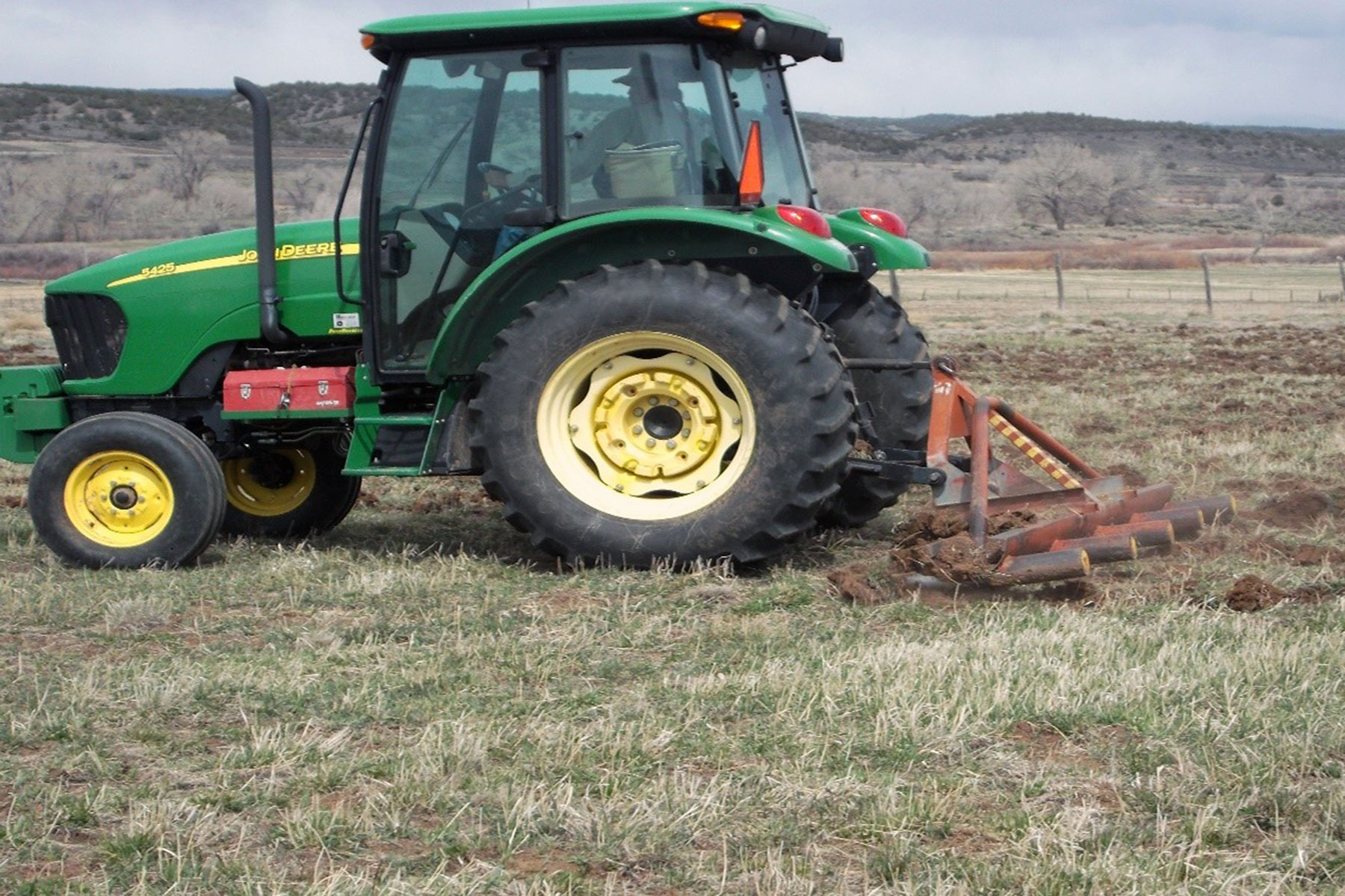The Southern Ute Agriculture Division is available to provide support to all Tribal members with custom farming activities, weed control, rodent management around homes, welding and agricultural production information. Field staff are currently working a full schedule. If you need any of the above services, please contact the Agriculture Division at 970-563-2900.
With the irrigation season being in full swing, many farmers are starting to ask the question of what I should do this summer?
“Every black cloud has a silver lining!” We have heard this quote our entire lives. It is meant to help us through dark times by giving us hope that something good can happen. We are now in the middle of an extended drought cycle in SW Colorado. It is the middle of May and winter has not provided the amount of moisture that we would consider normal. For now all we can do is hope for the best but plan for the worst. While planning, we should look for the silver lining that, if you believe the quote, is always there but we should also have plans that cover a worst case. A realistic look at actual crop production potential will exist with the amount of irrigation water that is expected and what that will mean to the crop value is important.
A hay producer in the Pine River Valley could see opportunities even though irrigation water may be at below average levels. The Pine River Valley has irrigation water supplied from storage in Vallecito Lake. Even though less water may be available, producers will receive some percentage of water that should be available well into the growing season. For example, if there is enough water to produce half of the crop that would be produced on an average year there may be a potential to market this hay at a much higher value per bale or ton. This could be possible if the surrounding areas that do not have the benefit of stored water may produce very little hay if any which should cause the price of hay to increase. The math is very simple. If you produce 1000 bales of hay on an average year and the value is $5/bale you only need to produce 500 bales on a hay short year if the value is $10/bale to create the same value. I am not suggesting that I think hay will be selling for $10/bale this year, but I am suggesting that hay production shortages may create opportunity for hay producers that get irrigation from stored systems.
Cattle producers won’t get the same benefit of the possible higher hay prices. Cattle producers feed the hay that they produce to their own cattle and if production is short they may not have enough hay and be forced to purchase at much higher prices or reduce cattle numbers. Hoping for summer rain to replace irrigation or boost dryland grass production is not a management strategy. It will only cause ranchers to keep animals longer and damage already stressed forage sources. Watching cattle markets and reducing numbers prior to overgrazing rangelands or worse using hay fields to feed cattle longer will only damage forages to a point that recovery of those forages will take much longer. Reducing cattle numbers is a hard and often stressful decision. Building a herd to develop the type of cattle that works for you often takes time and much effort. Selling significant numbers creates a rebuilding process that may take several years. This should be weighed against the time it takes for grazing areas to recover after overgrazing. This damage takes longer to repair and some damage may be permanent. Feeding hay through a drought is rarely profitable and often increases the financial damage to the livestock producer.
I ended the hay producer portion with if it doesn’t grow you don’t have to harvest it so I will end the cattle section with if the forage doesn’t grow the cows, which are the harvester on rangeland, aren’t needed. To go even further, if the forage doesn’t grow the cows will only create damage for this and future years. Additionally, waiting until forage resources are gone before reducing herd size often results in a very low market price for those cattle sold due to a flooded market.
One of the most important management activities during a short water year is to use the water early. This means that irrigators should be prepared to irrigate fields as early as water is available. Every day lost equates to lost production. Most hay forages in this area are cool season grasses that grow well in April and May. Supplying irrigation water early will have a strong positive response in growth and forage health. By attaining all the spring growth that is possible, production increases and if it rains in June and July the grasses will be in good condition and will be able to utilize these rains for growth.
Planning is the key to success. A key part of planning is being honest with yourself about the conditions and what they mean to your operation. Understand that planning is important every year if you want to succeed in hay and livestock production. Planning for drought is always part of the planning process for producers in SW Colorado.

